前言
随着人工智能与机器学习技术的快速发展,在Kubernetes上运行模型训练、图像处理类程序的需求日益增加,而实现这类需求的基础,就是Kubernetes对GPU等硬件加速设备的支持与管理。在本文中我们就说一下在Kubernetes中启动并运行GPU程序的注意事项。
Kubernetes对GPU支持的不足之处
我们知道Kubernetes可以实现对宿主机的CPU、内存、网络实现精细化的控制,但是到本文书写为止,Kubernetes尚未实现像管理CPU那样来管理GPU,比如有如下限制:
-
对于GPU资源只能设置
limit,这意味着requests不可以单独使用,要么只设置limit、要么同时设置二者,但二者值必须相等,不可以只设置request而不设置limit。 -
pod及容器之间,不可以共享GPU,且GPU也不可以过量分配(所以我们线上的程序采用
daemonSet方式运行)。 -
不允许以小数请求GPU资源分配。
Kubernetes如何管理GPU资源
扩展资源(Extended Resources)
和CPU资源不同的是,硬件加速设备类型有多种,比如说GPUs、NICs、FPGAs,而且它们的厂商也不止一家,Kubernetes要想挨个支持是不现实的,所以Kubernetes就把这些硬件加速设备统一当做扩展资源来处理。
Kubernetes在Pod的API对象里并没有提供像CPU那样的资源类型,它使用我们刚说到的扩展资源资源字段来传递GPU信息,下面是官方给出的声明使用nvidia硬件的示例:
apiVersion: v1
kind: Pod
metadata:
name: cuda-vector-add
spec:
restartPolicy: OnFailure
containers:
- name: cuda-vector-add
# https://github.com/kubernetes/kubernetes/blob/v1.7.11/test/images/nvidia-cuda/Dockerfile
image: "k8s.gcr.io/cuda-vector-add:v0.1"
resources:
limits:
nvidia.com/gpu: 1 # requesting 1 GPU
要想使用上面yaml文件声明使用GPU设备,那么需要先在Node节点上安装设备插件 Device Plugin。
设备插件(Device Plugin)
设备插件与设备厂商绑定,这里使用nvidia提供的Device Plugin。
官方的 NVIDIA GPU 设备插件 有以下要求:
-
Kubernetes 的节点必须预先安装了 NVIDIA 驱动
-
Kubernetes 的节点必须预先安装 nvidia-docker 2.0
-
Docker 的默认运行时必须设置为 nvidia-container-runtime,而不是 runc
-
NVIDIA 驱动版本 ~= 384.81
安装过程可以参考上面链接,这里就不在赘述,这里讨论Device Plugin做了哪些事及其实现方法。
- 暴露每个Node上的GPU个数
- 在Kubernetes上运行可以支持GPU的容器
Device Plugin工作流程图:
第一步:向kubelet的Device plugin Manager发起注册请求。
第二步:启动gRPC服务用于和kubelet进行通信。
第三步:kubelet通过ListAndWatch这个API定期获取设备信息列表。
第四步:kubelet将获取到的设备信息发送给API server。
不管是nvidia还是其它类型的硬件,如果要实现用于Kubernetes的自己的设备插件,都需要遵守Device Plugin的规范来实现如下代码中所示的 ListAndWatch 和 Allocate API。
// DevicePlugin is the service advertised by Device Plugins
service DevicePlugin {
// GetDevicePluginOptions returns options to be communicated with Device
// Manager
rpc GetDevicePluginOptions(Empty) returns (DevicePluginOptions) {}
// ListAndWatch returns a stream of List of Devices
// Whenever a Device state change or a Device disappears, ListAndWatch
// returns the new list
rpc ListAndWatch(Empty) returns (stream ListAndWatchResponse) {}
// GetPreferredAllocation returns a preferred set of devices to allocate
// from a list of available ones. The resulting preferred allocation is not
// guaranteed to be the allocation ultimately performed by the
// devicemanager. It is only designed to help the devicemanager make a more
// informed allocation decision when possible.
rpc GetPreferredAllocation(PreferredAllocationRequest) returns (PreferredAllocationResponse) {}
// Allocate is called during container creation so that the Device
// Plugin can run device specific operations and instruct Kubelet
// of the steps to make the Device available in the container
rpc Allocate(AllocateRequest) returns (AllocateResponse) {}
// PreStartContainer is called, if indicated by Device Plugin during registeration phase,
// before each container start. Device plugin can run device specific operations
// such as resetting the device before making devices available to the container
rpc PreStartContainer(PreStartContainerRequest) returns (PreStartContainerResponse) {}
}
总结
总的来讲,以Device Plugin方式来管理GPU等硬件设备,目前的控制还不够精细,粒度较大。所以很多情况下要把GPU用起来好像也不是非Device Plugin不可。我发现很多公司在使用时,并没有在YAML文件中指定GPU的个数,也没有在Kubernetes集群中安装Device Plugin插件,因为他们的程序以DaemonSet的方式运行,且每台机器上只有一块GPU,这样相当于一个程序独占一个GPU,至于把GPU设备及驱动加载到Docker容器内,可以通过在YAML文件中指定NVIDIA_DRIVER_CAPABILITIES环境变量来实现:
# 参考:https://docs.nvidia.com/datacenter/cloud-native/container-toolkit/user-guide.html
containers:
- env:
- name: NVIDIA_DRIVER_CAPABILITIES
value: compute,utility,video
